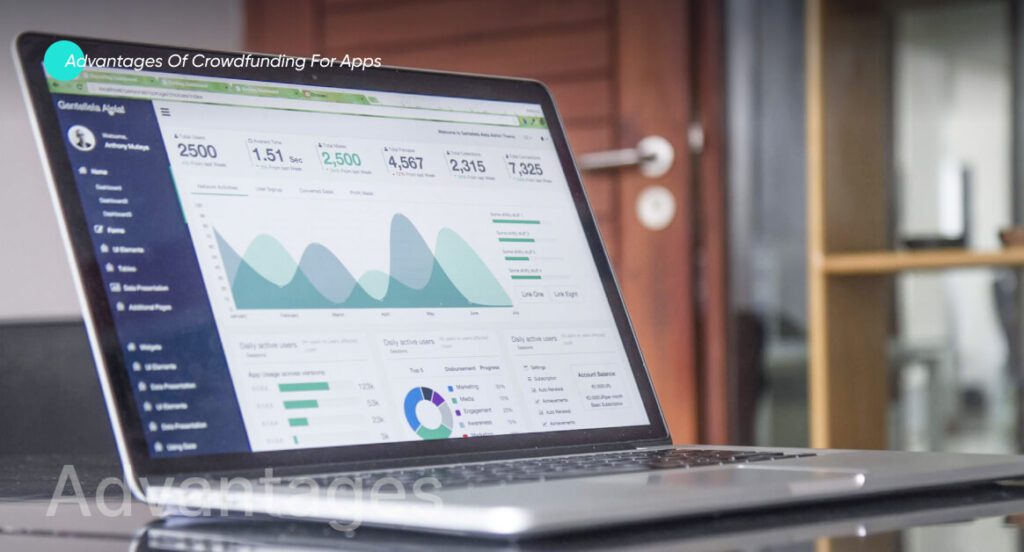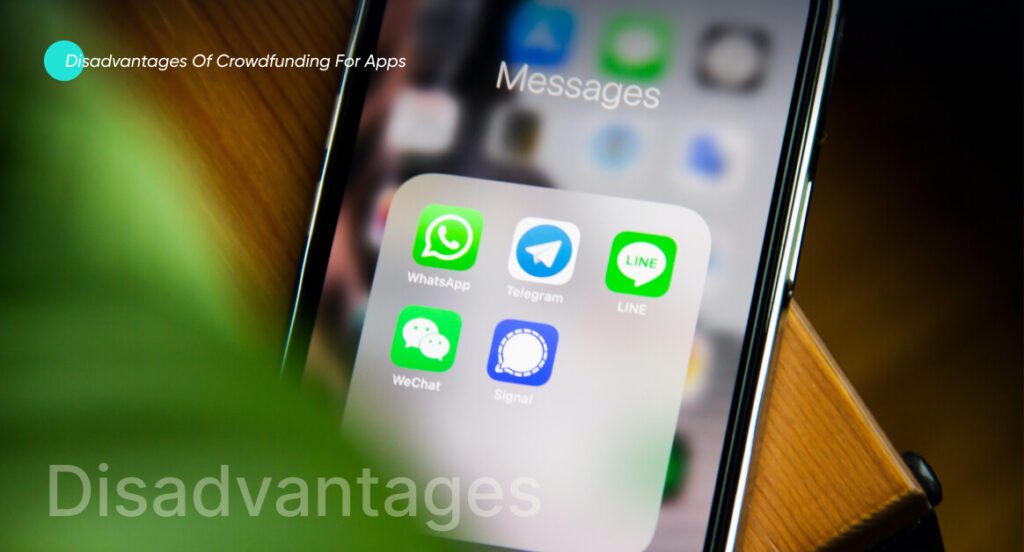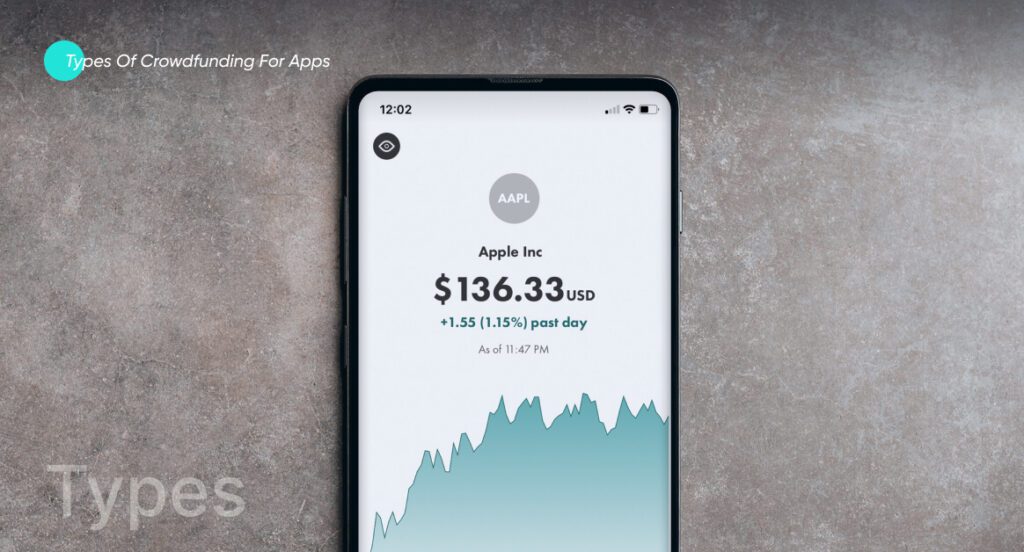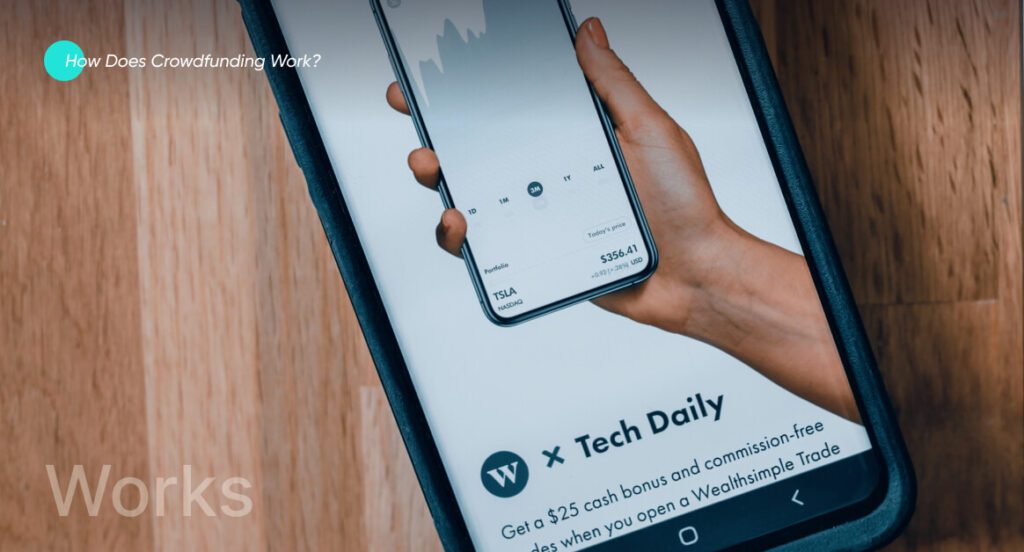What is Crowdfunding for Apps: Key Considerations
Crowdfunding for apps is a technique of raising funds for app development, launch, or improvement through online platforms. During the process, the developers present their app ideas and set funding objectives to invite contributions from various backers. But what do backers get in return for their contributions? The developers offer them rewards or incentives for their contributions. There are vast benefits of crowdfunding for apps, such as access to a large number of potential backers, validation of app ideas through pre-orders or pledges, early feedback and engagement with the app’s target audience, and the opportunity to raise capital by new means and shunning traditional investors or loans.
Undoubtedly, crowdfunding for apps has created new avenues for developers to bring their ideas to life and seamlessly connect with a large pool of backers globally. In this digital transformation era, crowdfunding for apps continues to shape the future of technology and redefine how we interact with the digital world. This article thoroughly explains the app crowdfunding concept and sheds light on its key elements.
The Process of Crowdfunding:
The crowdfunding model usually works by collecting funds from a large group of people through numerous means, such as websites and online platforms. Here are some of the ways to explain how crowdfunding for apps works.
1. Project Formation
The individual or organization seeking funds forms a campaign on a crowdfunding platform. They provide comprehensive information about their project, objectives, funding target, timeline, and any rewards or incentives they will offer contributors.
2. Campaign Launch
After creating the project page, the campaign streams on the crowdfunding platform. The developer then promotes the campaign through numerous channels, such as social media and email newsletters, to attract potential investors.
3. Investor Contributions
Interested investors visit the campaign page and have the option to contribute to the project financially. They can frequently choose the amount they wish to pledge, with different contribution levels offering varying rewards or perks.
4. Funding Target
The campaign sets a funding target: the minimum amount required to fulfill the project. Therefore, crowdfunding campaigns generally follow two models, ‘All-or-Nothing’ and ‘Flexible Funding.’ Under the first model, the project must accomplish its full funding target, while in the later model, the creator receives the funds, even if the target is not met.
5. Campaign Duration
During the timeframe of campaigns, investors can contribute, and the creators can update the page with information, reports, and videos. These campaigns usually run for a few days to numerous weeks for a fixed period.
6. Project Completion
The project is finished as soon as the funding target is achieved by the end of the reserved timeframe. The crowdfunding platform collects funds from investors. The platform may deduct a fee for its services and transfer the remaining amount to the creator.
7. Investor Rewards
After the completion of the project, the developers distribute rewards or incentives to the investors. It could take the form of unique merchandise, exclusive access to the app, and other perks.
See our latest relevant exploration How To Find Mobile App Investors? ![]()
The Advantages of Crowdfunding for Apps

Crowdfunding application development offers several advantages to app developers and investors. The following is a list of the key benefits.
1. Access to Capital
App crowdfunding provides a novel way to acquire funds for app development from a large pool of investors, in contrast to more conventional means such as investor funding or loans.
2. Early Feedback
Backers who contribute to a crowdfunding campaign often become early adopters of the app. This engagement with the initial user base can provide developers with valuable feedback, insights, and suggestions for improvement, leading to a more refined and user-friendly app.
3. Community of Investors
Crowdfunding campaigns create a community of investors who are stakeholders in the app and are particular about the app’s success. This community can also act as a brand advocate and play a key role in spreading the positive word about the app.
4. Enhanced Marketing
If crowdfunding campaigns are successful, they spur publicity and media coverage. It can have the positive effect of reinforcing the information about the app and attracting potential users.
5. Lesser Risk
In an “All-or-Nothing” crowdfunding model, no money is collected if the funding goal is not met, minimizing the developer’s financial risk. It ensures that the app can proceed only with ample funds.
6. Rewarding Investors
Developers can offer various rewards or incentives to investors depending on their contribution levels. These rewards can range from early access to the app to exclusive features, branded merchandise, or personalized experiences.
7. Ownership Claims
Crowdfunding does not typically involve renouncing equity or ownership in the company, which means developers can still retain complete control over the app’s development.
8. Quick Funding
Crowdfunding app development is effective in obtaining funds in a reasonably quick manner. In contrast to other funding sources, which can involve time-consuming processes, crowdfunding provides seamless and quick access to funding.
The Disadvantages Of Crowdfunding Apps

While crowdfunding for apps can offer numerous advantages, it also comes with certain disadvantages. Here are some of the key disadvantages:
1. Dubious Funding Target
There is no guarantee that a crowdfunding campaign will reach its funding target. The app developer may not receive funds if the campaign fails to attract enough investors or pledges to meet the target.
2. Time and Effort Requirements
Running a successful crowdfunding campaign requires time and effort. It includes preparing the campaign materials, creating engaging content, promoting the campaign, and engaging with investors’ actual app development.
3. Publicity risks
Crowdfunding campaigns are public and can attract attention from competitors, critics, or individuals looking to exploit weaknesses in the app’s concept or development plan. Adverse publicity or criticism can impact the app’s reputation even before it is fully developed.
4. High Investor Expectations
Investors contributing to app crowdfunding might have high expectations about the app’s performance and quality, features, and delivery timings. Disappointments can arise if these expectations are not met due to unforeseen developments.
5. Fees and Costs
Crowdfunding platforms typically charge fees for hosting campaigns and processing payments. These fees are deducted from the funds raised, reducing the amount available for crowdfunding app development.
Types of Crowdfunding for Apps
Depending on the project’s nature, crowdfunding apps can be arranged into various types. Here are some common crowdfunding examples.

1. Reward-based Crowdfunding Apps
These apps are the most common type of crowdfunding platforms. In reward-based crowdfunding, investors contribute funds to a project in return for non-monetary rewards or incentives. These rewards can range from early access to the product, exclusive merchandise, personalized experiences, or acknowledgments in the project credits. Kickstarter and Indiegogo are examples of reward-based crowdfunding for apps.
2. Equity Crowdfunding Apps
Equity crowdfunding platforms enable one to contribute funds to a project in exchange for equity or shares in the company. This crowdfunding type is popular for startups and early-stage businesses seeking capital to grow. Backers have a financial stake in the project’s success and can benefit from its future profits. Equity crowdfunding platforms include Seedrs and Crowdcube.
3. Donation-based Crowdfunding Apps
In donation-based crowdfunding for apps, individuals contribute funds to support charitable causes or social projects without anticipating any monetary return or rewards. These apps connect donors with non-profit organizations and individuals needing financial assistance. Examples of donation-based crowdfunding apps include GoFundMe and Kickstarter’s “Charitable Causes” category.
4. Debt Crowdfunding Apps
Debt crowdfunding enables individuals or businesses to borrow money from a pool of lenders online. The borrowers are expected to repay the loan amount to lenders with interest over a designated period. Examples of debt crowdfunding apps include LendingClub and Funding Circle.
5. Real Estate Crowdfunding Apps
Real estate crowdfunding platforms allow investors to pool their funds for real estate projects like properties, developments, or loans. Investors can own a partial share of the property and earn returns through rental income or property appreciation. RealtyShares and Fundrise are examples of real estate crowdfunding apps.
6. Product Pre-order Crowdfunding Apps
Product pre-order crowdfunding platforms focus on product pre-orders, where backers can contribute funds to store a copy of an upcoming product before it launches. Backers virtually become early adopters by pre-ordering the product. BackerKit Launch and BackerKit are examples of product pre-order crowdfunding apps.
How does Crowdfunding for Apps Work?

Crowdfunding for apps comprises multiple crucial stages. The following is a list of these key stages.
1. Creative Representation of Your Idea
Begin by strikingly showcasing your innovative app idea. Craft a visionary presentation highlighting the idea’s value and potential as a game-changer. It will help attract a wide range of investors and capture their attention.
2. Kickstart a Productive Campaign.
Once your idea is unleashed, launch an ongoing and productive crowdfunding campaign to attract initial investors for your mobile app project. To captivate investors, demonstrate the potential return on investment (ROI) they can expect from supporting your app.
3. Commence the Seed Round.
In the seed round, offer individuals a fair share in your startup company in exchange for monetary contributions. Communicate with local backers and tap into online networks to find interested backers willing to support your idea financially. Once you can collect sufficient capital, you can proceed with the development process on a larger scale.
4. Advance to the Official Round
In the official round, secure further support through additional crowdfunding campaigns during the ongoing app development. As challenges or other features arise, these campaigns can raise more funds, helping you complete the project.
5. Value Repeat Investors
Acknowledge the importance of loyal investors who repeatedly show interest in your crowdfunding app idea. Ensure open communication and honesty with them, as their support can attract more backers.
Ready to make your app dream a reality? Begin crowdfunding for apps with us! See Our App Development Services ![]()
FAQs
To create a crowdfunding app, plan and design the app with features for project creators and backers. Then, develop the app with a user-friendly interface and secure payment integration. Finally, thoroughly test the app before launching it to ensure its functionality, security, and scalability for a successful crowdfunding platform.
A basic crowdfunding app with essential features might cost around $10,000 to $50,000. However, a more sophisticated app with advanced functionalities could cost over $100,000. Ongoing maintenance and updates should also be considered in the overall budget.
Crowdfunding platforms make money through platform fees, a percentage of funds raised by successful projects, payment processing fees for backers’ contributions, and offering premium services for additional fees.
Gohar is a seasoned IT writer specializing in leading technologies. He holds a Diploma and Bachelor's degree from the University of London, with professional experience spanning over five years in the IT sector. His expertise involves a keen focus on mobile applications, web apps, blockchain, content management systems, e-commerce, and fintech. Beyond the professional field, Gohar is an avid reader and reads extensively about emerging and innovative technologies.